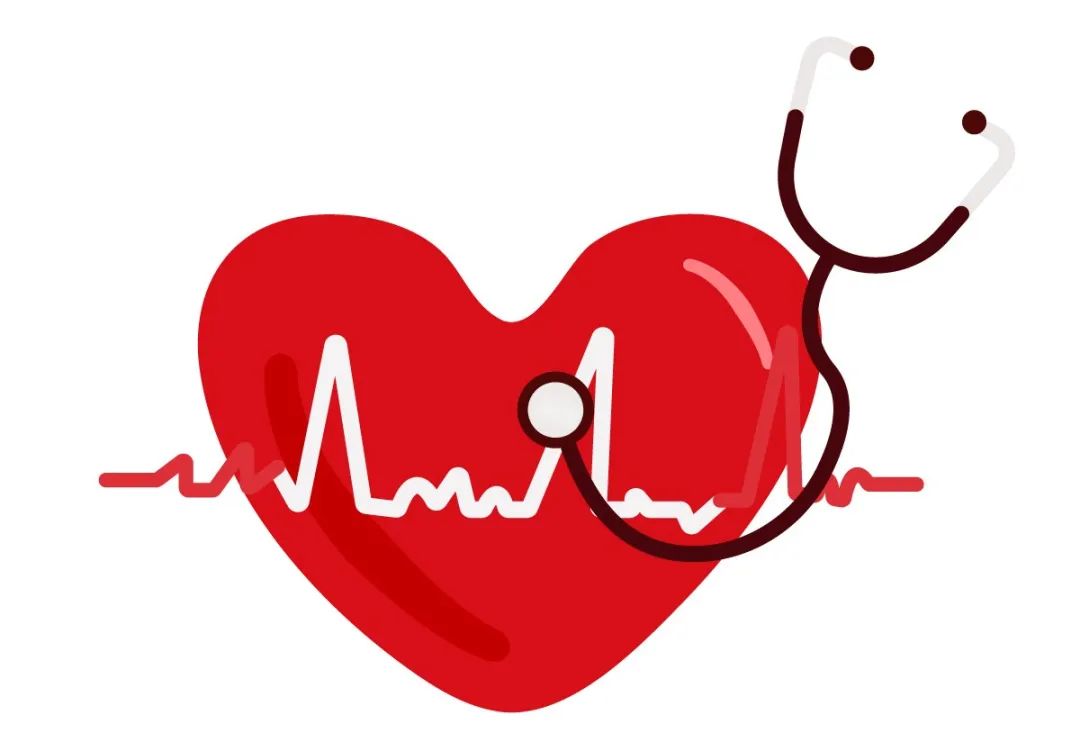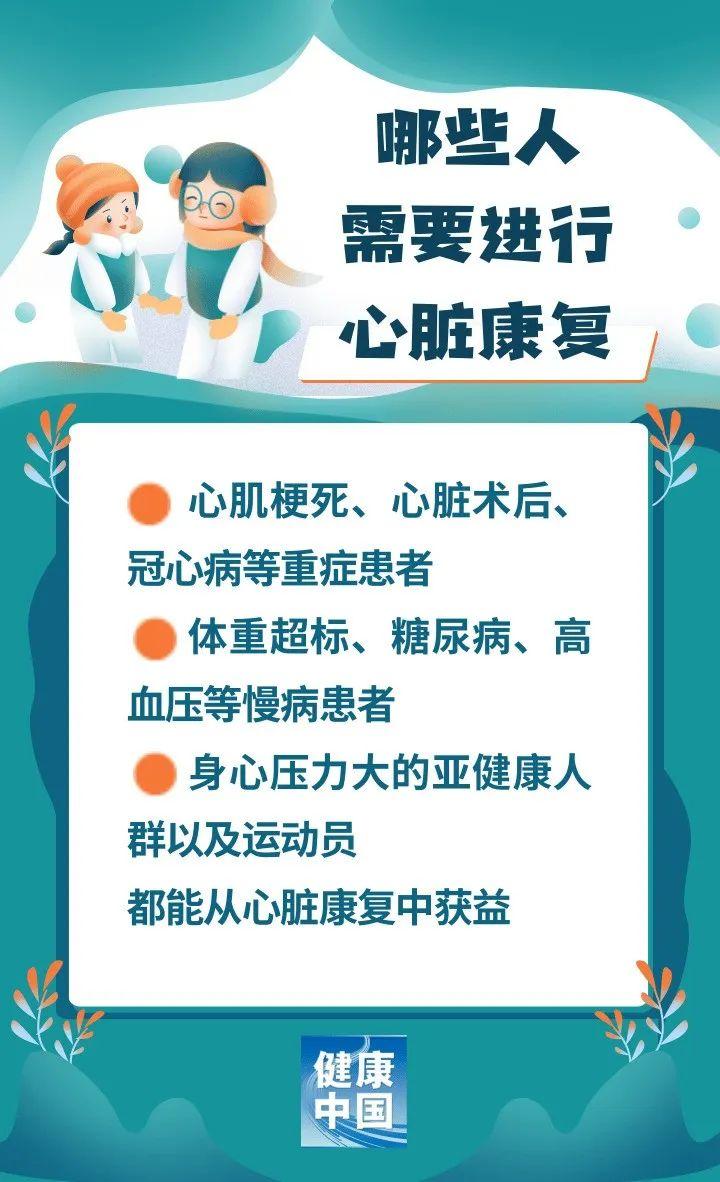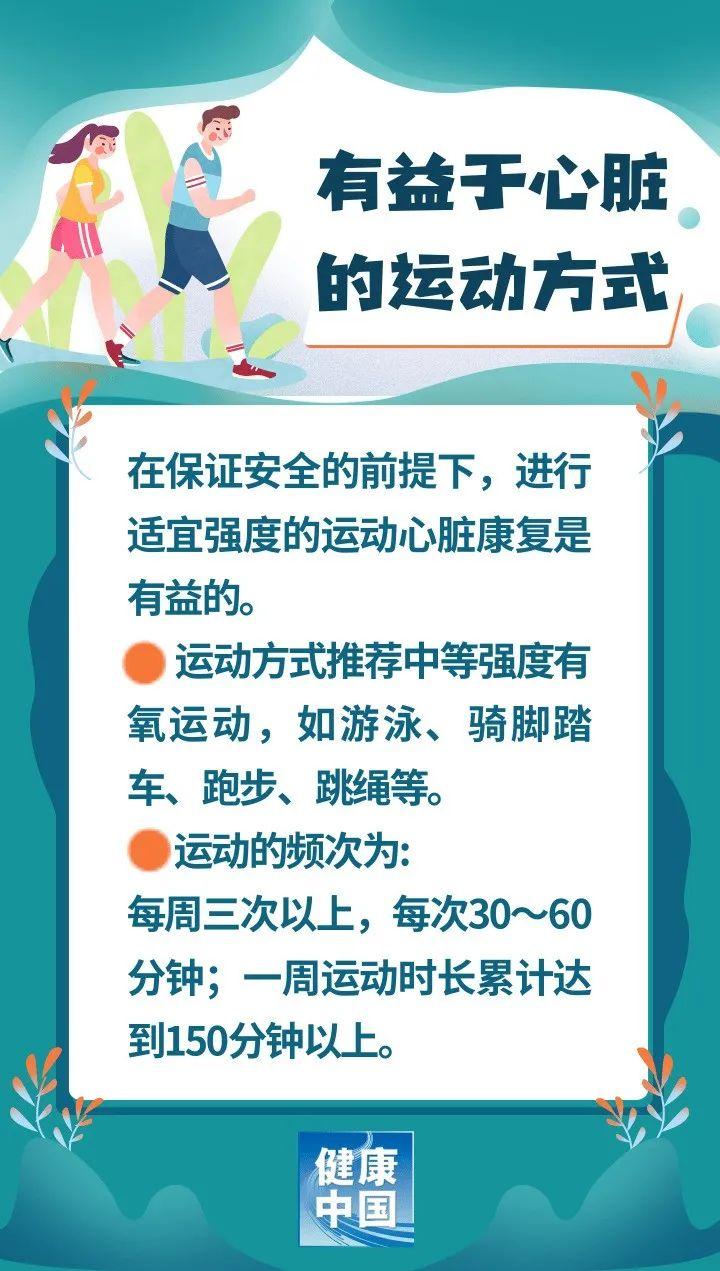Scientific movement, protect your heart.
According to the latest China Cardiovascular Health and Disease Report 2021 released by the National Cardiovascular Center,Two out of every five deaths due to illness in China died of cardiovascular diseases.
Cardiac rehabilitation is an important means to treat stable cardiovascular diseases and prevent recurrent cardiovascular events. Therefore, it is imperative to fully understand the role of scientific exercise in promoting cardiovascular health and actively carry out cardiac rehabilitation.

A simple analogy:The heart is as important to the human body as the engine is to all kinds of machines and needs regular maintenance.Cardiac rehabilitation is like guiding everyone to use and maintain this engine of human body, ensuring the vitality of the engine, thus improving the quality of life.
Who needs cardiac rehabilitation?

A large number of studies have shown that exercise is beneficial to cardiovascular health.Healthy people and sub-healthy people can reduce the incidence of cardiovascular events by developing active and scientific exercise habits.
Exercise mode:You can choose moderate-intensity aerobic exercise, that is, a rhythmic exercise type that uses large muscle groups of the whole body.Such as swimming, cycling, running and skipping rope.

Tip 1:Everyone’s basal heart rate and peak heart rate vary greatly. For women over 50 years old, men over 40 years old and patients with weak health, an in-depth heart examination should be done before starting exercise rehabilitation."Cardiopulmonary Exercise Test"It can measure everyone’s anaerobic threshold heart rate and peak heart rate, and at the same time, it can more accurately determine the "warning line" of the maximum heart rate during exercise, and judge the heart rate interval corresponding to different exercise intensities.
Tip 2:People who don’t exercise for a long time should followstep by stepThe principle, let the heart and blood vessels gradually adapt, beware of excessive fatigue to increase the risk of cardiovascular events, but also avoid joint muscle damage.
Tip 3:Overweight people should adopt a combination of nutrition and exercise.Controlling energy intake is a necessary means to lose weight, but excessive control of energy will reduce lean body weight (fat-free body weight, the weight of other body components except fat). It is suggested that overweight people lose 5% ~ 10% weight within 6 ~ 12 months. Overweight people need longer aerobic exercise to consume fat, and the recommended aerobic exercise time is 45 ~ 60 minutes. Resistance training can consume more energy. It is better to combine aerobic exercise with resistance exercise.
After the winter, some sports-related sudden deaths have attracted people’s attention, especially the sudden death of young employees of a company in Shanghai outside the gym, which makes people feel awkward. Studies have confirmed that lack of exercise or unreasonable exercise are important factors leading to cardiovascular events. Here are some special precautions about "protecting the heart" in the scientific movement:
oneIf you have chest pain, dizziness, overwork, shortness of breath, excessive sweating, nausea and vomiting and irregular pulse during exercise,Exercise should be stopped immediately.The above symptoms still persist after stopping exercise, especially after stopping exercise for 5 ~ 6 minutes, the heart rate still increases, so you should seek medical advice in time.
2The elderly should choose moderate and low intensity exercise and appropriately increase daily physical activity; You can also carry out traditional rehabilitation training such as Tai Ji Chuan and Baduanjin.The exercise time is relatively shortened or prolonged according to the degree of fatigue,The general exercise duration is 30 ~ 60 minutes/day.
threePatients who are weak in the early stage after cardiac surgery can start with breathing training. Respiratory training can prevent pulmonary complications, promote sputum discharge, effectively increase vital capacity and improve lung function. Adopt abdominal breathing mode, that is, the abdomen bulges after inhaling the nose and adducts after exhaling.When exercising, you can inhale through the nose and exhale through the mouth, take a deep breath and try to prolong the breathing time.The practice of lip-shrinking and exhaling is also an important part of breathing training. It emphasizes that when inhaling, breathe in slowly through the nose, and breathe out after holding your breath a little (similar to blowing candles). The ratio of inhalation time to exhalation time is 1: 2. 10 times per group, 5 groups per day. Some low-intensity exercises, such as walking and limb training, start with 10 minutes/time, 2 ~ 3 times a day, and then gradually increase to the target amount of exercise.
fourNo matter what kind of exercise,The intensity of exercise needs to start from a low intensity,When the individual gradually adapts, he will gradually increase to the target exercise intensity for exercise.
Source: Popular Health magazine
Author: Fan Denghuang, Department of Rehabilitation Medicine, First Affiliated Hospital of Zhejiang University School of Medicine
Audit: Expert of National Health Science Popularization Expert Database
Wang Fang, chief physician, Department of Cardiology, Beijing Hospital
Planning: Wu Weihong Tan Jia
Editor: Yu Yunxi